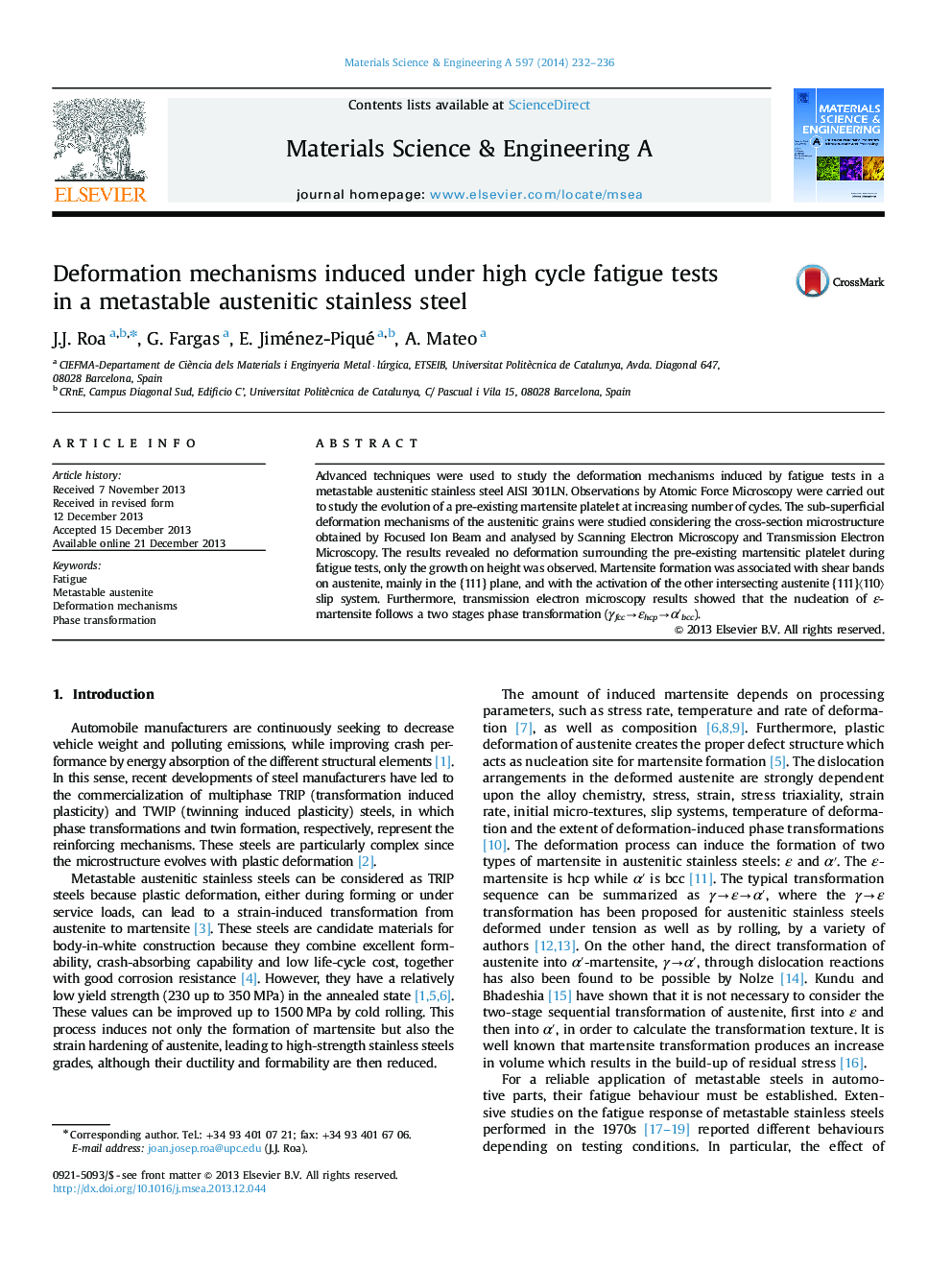| Article ID | Journal | Published Year | Pages | File Type |
|---|---|---|---|---|
| 7981434 | Materials Science and Engineering: A | 2014 | 5 Pages |
Abstract
Advanced techniques were used to study the deformation mechanisms induced by fatigue tests in a metastable austenitic stainless steel AISI 301LN. Observations by Atomic Force Microscopy were carried out to study the evolution of a pre-existing martensite platelet at increasing number of cycles. The sub-superficial deformation mechanisms of the austenitic grains were studied considering the cross-section microstructure obtained by Focused Ion Beam and analysed by Scanning Electron Microscopy and Transmission Electron Microscopy. The results revealed no deformation surrounding the pre-existing martensitic platelet during fatigue tests, only the growth on height was observed. Martensite formation was associated with shear bands on austenite, mainly in the {111} plane, and with the activation of the other intersecting austenite {111}ã110ã slip system. Furthermore, transmission electron microscopy results showed that the nucleation of ε-martensite follows a two stages phase transformation (γfccâεhcpâα'bcc).
Related Topics
Physical Sciences and Engineering
Materials Science
Materials Science (General)
Authors
J.J. Roa, G. Fargas, E. Jiménez-Piqué, A. Mateo,
